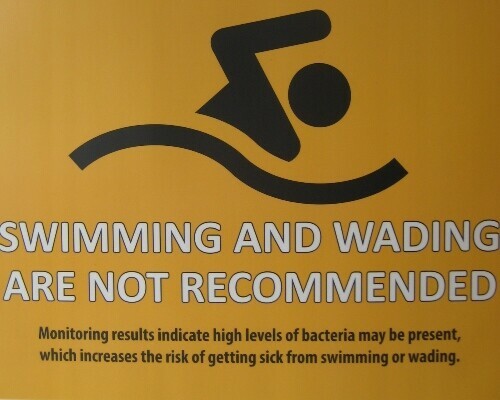Takin’ it to the streets

These days, the expanding news cycle about our climate crisis feels like one big wave after another hitting the shore. The waves are pulling us into the water and then pulling us under. It’s simply more than we can handle.
Not only is it difficult to mentally assimilate and understand the impact and repercussions of these climate events but also to figure out how to deal with the growing feelings of anxiety, stress and depression. Too often, it’s hard to imagine how we can wrap our arms - much less our heads - around what’s happening.
Over the past several weeks, we’ve seen heatwaves bring new high temperatures to cities around the country. Las Vegas hit 120 degrees. Fresno, California reached 114 degrees. Raleigh, North Carolina experienced a heat index of 118 degrees. And a study reported that the streets in downtown Phoenix were recording temperatures of 140 degrees and higher.
On June 22nd, the Washington Post reported that there were 1,400 new high temperature records set around the planet. And on July 12th, EcoWatch reported that new data from the Copernicus Climate Change Service indicated that the global average temperature for the 12-month period of June, 2023 to May, 2024 was 1.63 degrees Celsius above the pre-industrial average.
Our collective world is definitely changing. Not only are we setting new records for high temperatures but the CO2 atmospheric levels continue to rise along with the sea levels which are already changing the shorelines on the east and west coasts.
Here in Duluth, we’re hearing about new studies reporting that the winters are getting warmer and the droughts could become more severe. We see a continuous decline in the insect and bird populations. And just last week, there was a large yellow sign along the beach at Canal Park with the following warning - “Swimming and wading are not recommended. Monitoring results indicate high levels of bacteria may be present which increases the risk of getting sick from swimming or wading.”
On Monday, July 22nd, a group of us in Duluth will be participating in Climate Emergency Day, which is a global campaign to promote the end of fossil fuels and engage political leaders in supporting more proactive climate initiatives. We will also be presenting a climate briefing to our city and community leaders, and announcing the creation of a citizen-led Climate Commission.
In the last few years, it appears as if our city and county governments as well as the business community are not taking the necessary leadership roles in acknowledging the severity of climate change and undertaking the essential programs we need to address this climate emergency which will significantly impact the most vulnerable populations in our city. We now have a congressman who won’t acknowledge climate change and a new mayor who stated that climate change is not a priority in his administration.
Kate Orff, in her essay Mending the Landscapes (included with other essays in the book All We Can Save: Truth, Courage,and Solutions for the Climate Crisis), wrote, “Communities are often suspicious of change, and local laws sometimes prohibit event the modest solar panel or geothermal well. Yet we know the climate crisis demands massive transitions in energy, land, industry, transport, buildings, and cities, which have direct impacts on the places where we live, work, and play - the places we love. The public needs to be informed and empowered to consider the trade-offs and transition ahead, and communities must be engaged in codesigning the biodiverse, low-carbon, climate-conscious physical world we want to manifest.”
While reading Orff’s essay, I’m listening to the Doobie Brothers and a light goes off. Inspired by the song “Takin’ It To The Streets,” I’m thinking that the streets are not only a place for protesting but also for transforming a neighborhood. And, in particular, I was thinking of the streets we live on.
Take one block on Jefferson Street. At the corner of 17th and Jefferson, we have a roundabout garden, a community garden at the Hanna House and a new natural garden in front of the Dorothy Day House.
What would happen if we could engage our neighbors on that one block of Jefferson Street to build more front lawn gardens and backyard vegetable gardens, use manual garden tools and equipment instead of electric and gas-powered, explore the use of solar panels, encourage each other to walk and bike more, promote composting and recycling, and even install speed bumps on the street to slow down cars speeding through the neighborhood at 40 or 50 miles an hour.
Just imagine what that block and other blocks could look like and even feel like. Taking Orff’s advice, we could identify a number of streets around the city where we could begin to explore and then build streets that are healthier, safer and more resilient in the neighborhoods where we live.
The bottom line is that we need to design streets and neighborhoods that can adapt to the ongoing climate changes coming our way for many years. And the citizens don’t have to wait for our political and business leaders’ permission.
